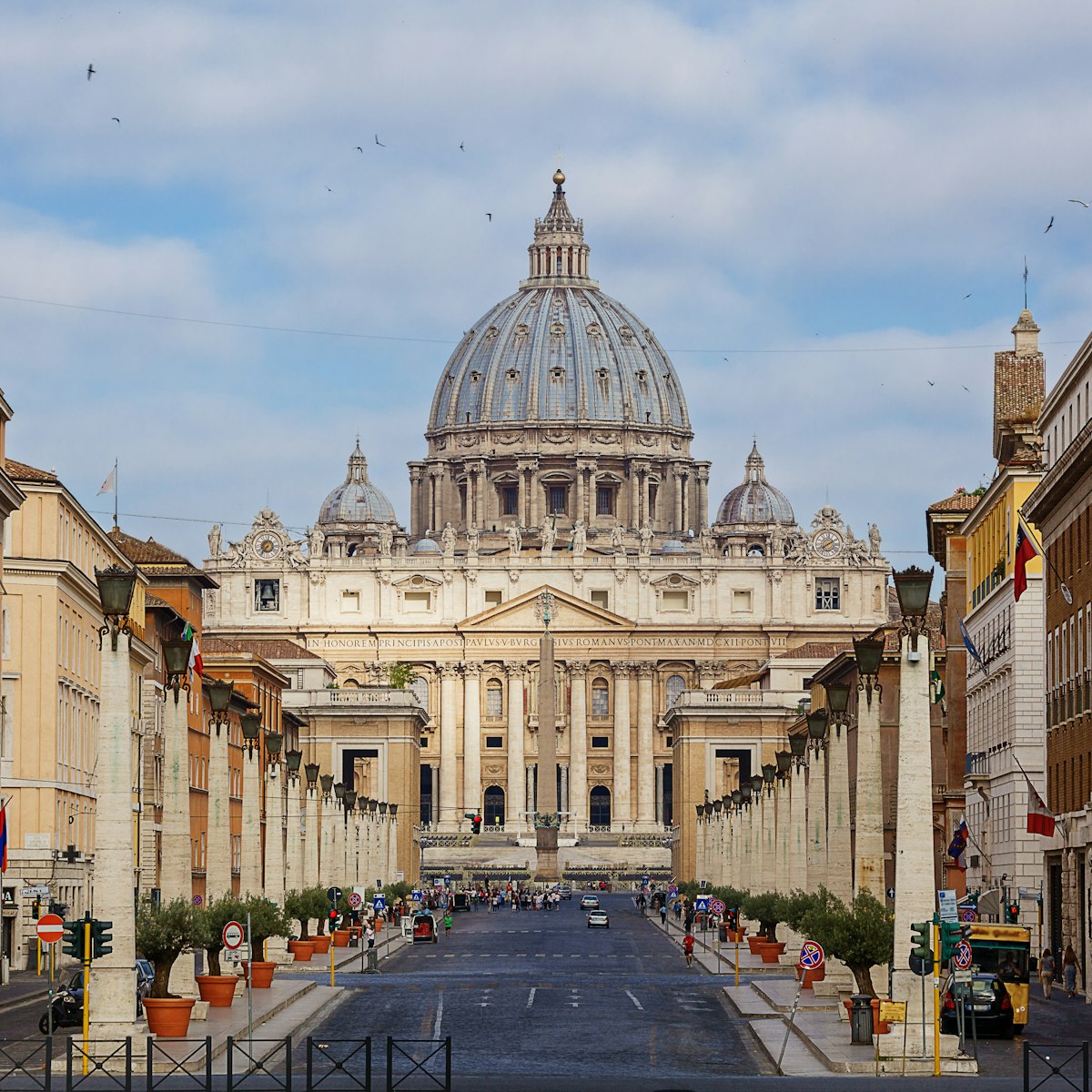Famous for its brilliant Byzantine mosaics, which have been preserved in their original state, this small 9th-century church is dedicated to St Praxedes, an early Christian heroine who hid Christians fleeing persecution and buried those she couldn’t save in a well. The position of the well is now marked by a marble disc on the floor of the nave.
The mosaics entirely cover the walls and vault. They were produced by artists whom Pope Paschal I had brought in specially from Byzantium and bear all the hallmarks of their eastern creators, with bold gold backgrounds and a marked Christian symbolism. The apse mosaics depict Christ flanked by Sts Peter, Pudentiana and Zeno on the right, and Paul, Praxedes and Paschal on the left. All the figures have golden halos except for Paschal, whose head is shadowed by a blue nimbus to indicate that he was still alive at the time.
Further treasures await in the heavily mosaiced Cappella di San Zenone, including a piece of the column to which Christ is said to have been tied when he was flogged, brought back from Jerusalem – it’s in the glass case on the right.







